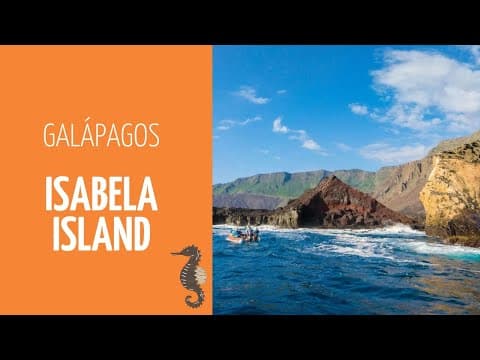Cruises
Galapagos
Info
Cruises
Galapagos
Info
%3Aformat(webp)%2Fgal%2Fdestination%2Fisabela.jpg&w=1920&q=75)
The remarkably-shaped Isabela Island was originally called Albemarle Island by the first Galápagos explorers in 1684. It is the largest of all the islands at 120 km long, and its total area is larger than that of all the other islands put together! The northwestern side of the island features Tagus Cove, a notorious anchorage used originally by pirates and buccaneers, and later by whalers and fishermen.
Isabela was visited by Charles Darwin in 1835 when he arrived on the Beagle. Near the end of the 19th century, Isabela Island started to be properly colonized with the founding of the town of Puerto Villamil on the south coast, and later the inland settlement of Santa Tomas in the highlands. Isabela was a centre for lime production in the islands, which was made by burning coral that had been collected from the abundant coastal waters. Santa Tomas was home to a sulphur mine that was based in the volcanic crater. The lack of much fresh water on the islands meant neither of these businesses thrived and the island never become too developed. One of the younger islands in the Galápagos, Isabela Island was formed by the joining up of six volcanoes, all bar one of which are still classed as active. Amongst them is the famous Wolf Volcano, whose summit is the highest point on the whole archipelago.
The island's population has grown slowly over the years and now stands at over 1,750. The majority of Isabela islanders make their living by fishing, farming, and from tourism. Most of them live on the southern coast at Puerto Villamil. The island has many relatively new lava fields, and the surrounding soils have not yet broken down to develop enough nutrients to support the variety of habitats found on some of the other Galápagos islands. However, the Isabela wildlife is amongst the richest to be found anywhere in the Galápagos. Isabela is home to more wild tortoises than all the other islands put together, and each of its 6 volcanoes boasts a separate species. On her west coast, Isabela is hit by the nutrient-rich Cromwell Current, which rises up from the depths and creates a bountiful feeding ground for fish, whales dolphins and seabirds. Isabela has the reputation as the best spot for whale watching in the archipelago, with 16 species seen in the seas around her.
The island was formed when 6 volcanoes joined together
16 species of whale have been seen in the waters around Isabela
Wolf Volcano on Isabela is the highest point in the whole Galápagos
Isabela is bigger than all the other islands put together!

%3Aformat(webp)%2Fgal%2Fdestination%2F20170225_Day_5_Fernandina_Punta_Espinosa_Isabela_Urbina_Bay_323_of_473.jpg&w=1920&q=75)
%3Aformat(webp)%2Fgal%2Fdestination%2F20170225_Day_5_Fernandina_Punta_Espinosa_Isabela_Urbina_Bay_344_of_473.jpg&w=1920&q=75)
%3Aformat(webp)%2Fuser%2F00476f13-8809-44f4-94fc-2a8dd688e8ff-hitomi.jpg&w=1920&q=75)
Your contact
Hitomi
%3Aformat(webp)%2Fuser%2F00476f13-8809-44f4-94fc-2a8dd688e8ff-hitomi.jpg&w=1920&q=75)